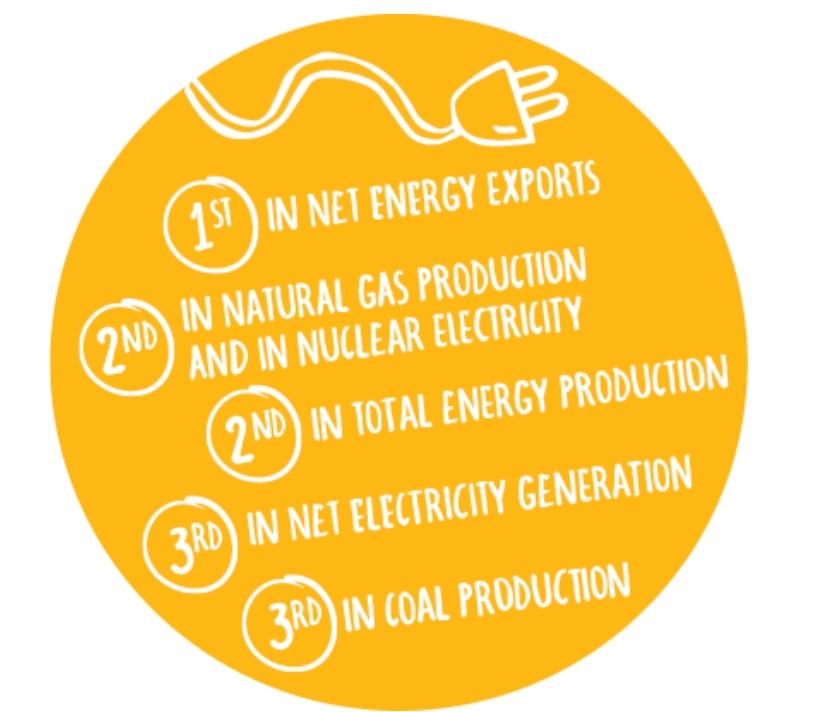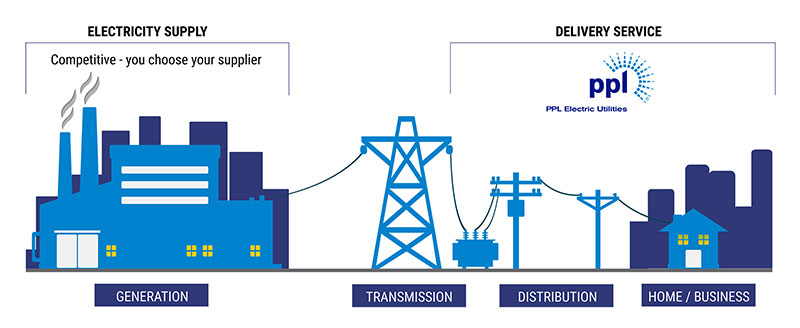Energy Industry

The second-largest producer of energy in the United States, Pennsylvania has played a pivotal role across three energy revolutions in coal, oil, and natural gas. The commonwealth is today positioned to lead a fourth revolution in low-carbon energy technologies including carbon capture, utilization, storage and hydrogen.
Pennsylvania is rich in energy resources with a significant history of energy production and innovation. Pennsylvania is strategically important to the regional and national energy landscape due to the diversity of energy resources, integration with surrounding markets, and mix of legacy assets and newly emerging resources. Pennsylvania has been one of the leading producers of coal for over 200 years and hosted the country’s first commercial oil well and the world’s first ever full-scale commercial nuclear power plant. Pennsylvania was one of the first states to advance an alternative energy portfolio standard to further develop ample renewable resources like wind and solar.
Natural Gas

Pennsylvania is the second-largest natural gas-producing state. Thousands of miles of new pipelines have been constructed in Pennsylvania to transport Marcellus Shale natural gas including the Sunbury Pipeline, a 35-mile pipeline to bring low-cost natural gas to the 1,000-megawatt natural gas-fueled power generation facility in Shamokin Dam in Snyder County, Pennsylvania and the Atlantic Sunrise Pipeline, portions of which run through Central PA counties to expand the capacity of the Transco system.
Electric

Pennsylvania is the third-largest producer of electricity in the nation and sends the most electricity to other states. Electricity is primarily generated from natural gas, nuclear and coal. Pennsylvania was one of the first states to implement deregulation of energy sources to allow consumers the ability to choose energy generation provider to suit needs and budgets. Pennsylvania has below US average commercial and industrial energy prices.

The U.S. Energy Information Administration (EIA) collects, analyzes, and disseminates independent and impartial energy information to promote sound policymaking, efficient markets, and public understanding of energy and its interaction with the economy and the environment.
Renewable Energy
Renewable energy in Pennsylvania is currently generated primarily through wind, hydropower, and biomass. Wind is Pennsylvania’s largest renewable resource for electricity generation.
Solar Projects in Central PA
- Northumberland Solar Project – 70MW
- Penn State Solar Energy – 70MW
- Montour Solar One – 100MW
- Limestone Solar – 80MW
Biomass Projects in Central PA
Hydrogen
Hydrogen can be produced from diverse domestic resources with potentially near-zero greenhouse gas emissions. Once produced, hydrogen generates electrical power in a fuel cell, emitting only water vapor and warm air. It holds promise for growth in both the stationary and transportation energy sectors.
Team Pennsylvania Foundation, a non-partisan, dynamic, public-private partnership that initiates and supports innovative programs to improve Pennsylvania’s competitiveness and economic prosperity is leading the way with the release of a new report, Successful Deployment of Carbon Management and Hydrogen Economies in the Commonwealth of Pennsylvania and facilitation collaboration to serve as the lead applicant on hydrogen hub concept paper submitted to US DOE and the Team Pennsylvania Foundation Decarbonization Network of Appalachia (DNA) received an encouraged notice for US DOE funding.
KeyState Natural Gas Synthesis, located in Clinton County in Central Pennsylvania is Appalachia’s first commercial carbon capture and storage project and represents the transition to lower emissions transportation, chemicals and manufacturing and is projected to be operational in 2026.
Penn State University Hydrogen Energy Research – Hydrogen energy research is one of several important energy-related topics at Penn State University. Many faculty, staff, and students at Penn State are working with collaborators in industry and our National Laboratories on hydrogen storage, production, and utilization. They are inventing new hydrogen technologies and contributing to the growth of a hydrogen infrastructure in Pennsylvania, the United States, and at various locations around the world. Penn State Energy 2100 initiative highlights PSUs work on energy and renewable technologies.
Recent articles on low carbon hydrogen in Pennsylvania:
-
- Pennsylvania’s Planned Blue Hydrogen Hub Driving Mid-Atlantic Energy Transition
- Nikola developing low-carbon hydrogen production in Pennsylvania
- Pennsylvania @2 Billion Tax Credit Bill – Includes Hydrogen Production, Milk Processing and Biomedical research industries. Attract hydrogen hub, provide $50M a year in tax breaks to company that agrees to produce hydrogen for 20 years and increase an existing methane tax credit by $30M to $56.6M annually. Includes $15M over 8 years for a milk processing project, $10M annually over 5 years for biomedical research and $10M annually over 5 years for semiconductor production.
